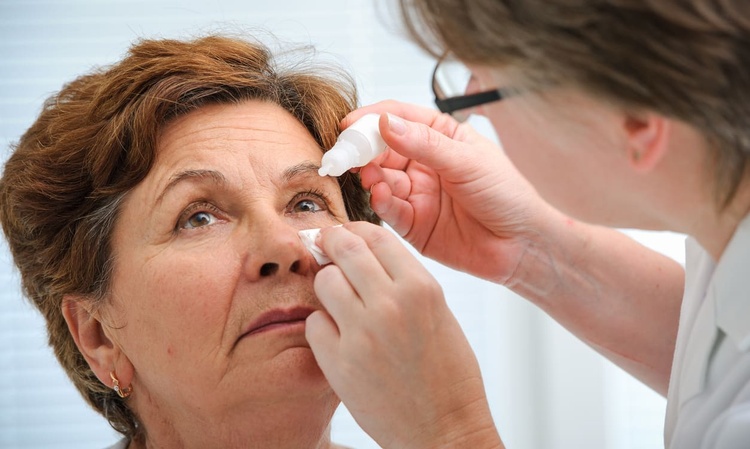A Guide to the Latest Eye Drops for Dry Eyes: What You Need to Know
Dry eyes can be more than just an occasional annoyance. For millions of people, this condition affects daily comfort, productivity, and overall quality of life. Whether caused by environmental factors, screen time, aging, or underlying health issues, dry eye syndrome requires proper understanding and treatment. Fortunately, advancements in eye drop formulations offer new hope and relief for those struggling with persistent dryness, irritation, and discomfort.

Dry eye syndrome is a widespread condition that occurs when tears fail to provide adequate lubrication for the eyes. This can happen due to insufficient tear production or poor tear quality. Common symptoms include stinging, burning, redness, blurred vision, and a gritty sensation. Understanding the root causes and available treatments is essential for managing this condition effectively and maintaining long-term eye health.
Understanding Dry Eyes
Dry eyes develop when the tear film, which consists of three layers—oil, water, and mucus—becomes unstable. The oil layer prevents evaporation, the water layer provides moisture and nutrients, and the mucus layer helps tears spread evenly across the eye surface. Disruption in any of these layers can lead to dryness. Contributing factors include aging, hormonal changes, certain medications, autoimmune diseases, and environmental conditions such as wind, smoke, or dry climates. Prolonged screen use has also emerged as a significant contributor, as people tend to blink less frequently when focusing on digital devices. Recognizing these triggers helps individuals take proactive steps toward relief.
What’s New in Eye Drop Formulations
Recent years have brought significant innovations in eye drop technology. Traditional artificial tears remain a staple, but newer formulations now incorporate advanced ingredients designed to address specific aspects of dry eye syndrome. Lipid-based drops, for example, target the oil layer of the tear film, reducing evaporation and providing longer-lasting relief. Gel-based and ointment formulations offer thicker consistency for severe dryness, particularly during sleep. Preservative-free options have also gained popularity, as preservatives can irritate sensitive eyes with frequent use. Additionally, some newer drops contain electrolytes, hyaluronic acid, or osmoprotectants that help restore the natural balance of the tear film and protect eye surface cells. These advancements provide more personalized solutions for varying degrees and types of dry eye conditions.
Prescription vs. Over-the-Counter Options
Choosing between prescription and over-the-counter eye drops depends on the severity and underlying cause of dry eyes. Over-the-counter artificial tears are suitable for mild to moderate symptoms and are widely accessible without a doctor’s visit. They provide temporary relief by supplementing natural tears. However, chronic or severe dry eye may require prescription treatments. Prescription options include anti-inflammatory drops such as cyclosporine or lifitegrast, which reduce inflammation and increase natural tear production over time. Another prescription option involves drops that stimulate tear production by targeting specific receptors in the eye. In some cases, doctors may prescribe antibiotic or steroid drops if infection or significant inflammation is present. Consulting an eye care professional ensures the most appropriate treatment based on individual needs and medical history.
Safety and Effectiveness
When using eye drops, safety and effectiveness are paramount. Most over-the-counter artificial tears are safe for regular use, but those containing preservatives should be limited to four times daily to avoid irritation. Preservative-free single-use vials are recommended for more frequent application. Prescription drops typically undergo rigorous clinical testing and are proven effective for chronic conditions, though they may take several weeks to show full benefits. Potential side effects vary by product but can include temporary stinging, blurred vision, or redness. Rarely, allergic reactions may occur. It is crucial to follow dosage instructions, avoid touching the dropper tip to any surface to prevent contamination, and store drops according to package directions. Individuals with contact lenses should choose drops specifically labeled as compatible with lenses or remove lenses before application. Regular follow-ups with an eye care provider help monitor progress and adjust treatment as needed.
Tips for Choosing and Using Eye Drops
Selecting the right eye drops involves understanding personal symptoms and lifestyle needs. For occasional dryness, standard artificial tears may suffice. For persistent symptoms, preservative-free or lipid-based formulations offer better long-term solutions. Reading labels carefully helps identify active ingredients and potential allergens. When applying eye drops, wash hands thoroughly, tilt the head back, pull down the lower eyelid to create a pocket, and squeeze one drop into the pocket without touching the eye. Close the eye gently for a minute to allow absorption, and avoid blinking excessively. If using multiple types of drops, wait at least five minutes between applications. Complementary strategies such as using a humidifier, taking screen breaks, staying hydrated, and wearing wraparound sunglasses outdoors can enhance the effectiveness of eye drops. Consistency in application and lifestyle adjustments yields the best outcomes.
Conclusion
Dry eye syndrome is a manageable condition with the right approach and treatment. Advances in eye drop formulations have expanded options for individuals seeking relief, from over-the-counter artificial tears to specialized prescription therapies. Understanding the causes of dry eyes, exploring new formulation technologies, weighing prescription versus non-prescription choices, prioritizing safety, and following practical usage tips all contribute to improved eye comfort and health. While eye drops play a central role in treatment, combining them with environmental adjustments and professional guidance ensures comprehensive care. Anyone experiencing persistent or worsening symptoms should consult an eye care professional for personalized evaluation and treatment recommendations.
This article is for informational purposes only and should not be considered medical advice. Please consult a qualified healthcare professional for personalized guidance and treatment.




